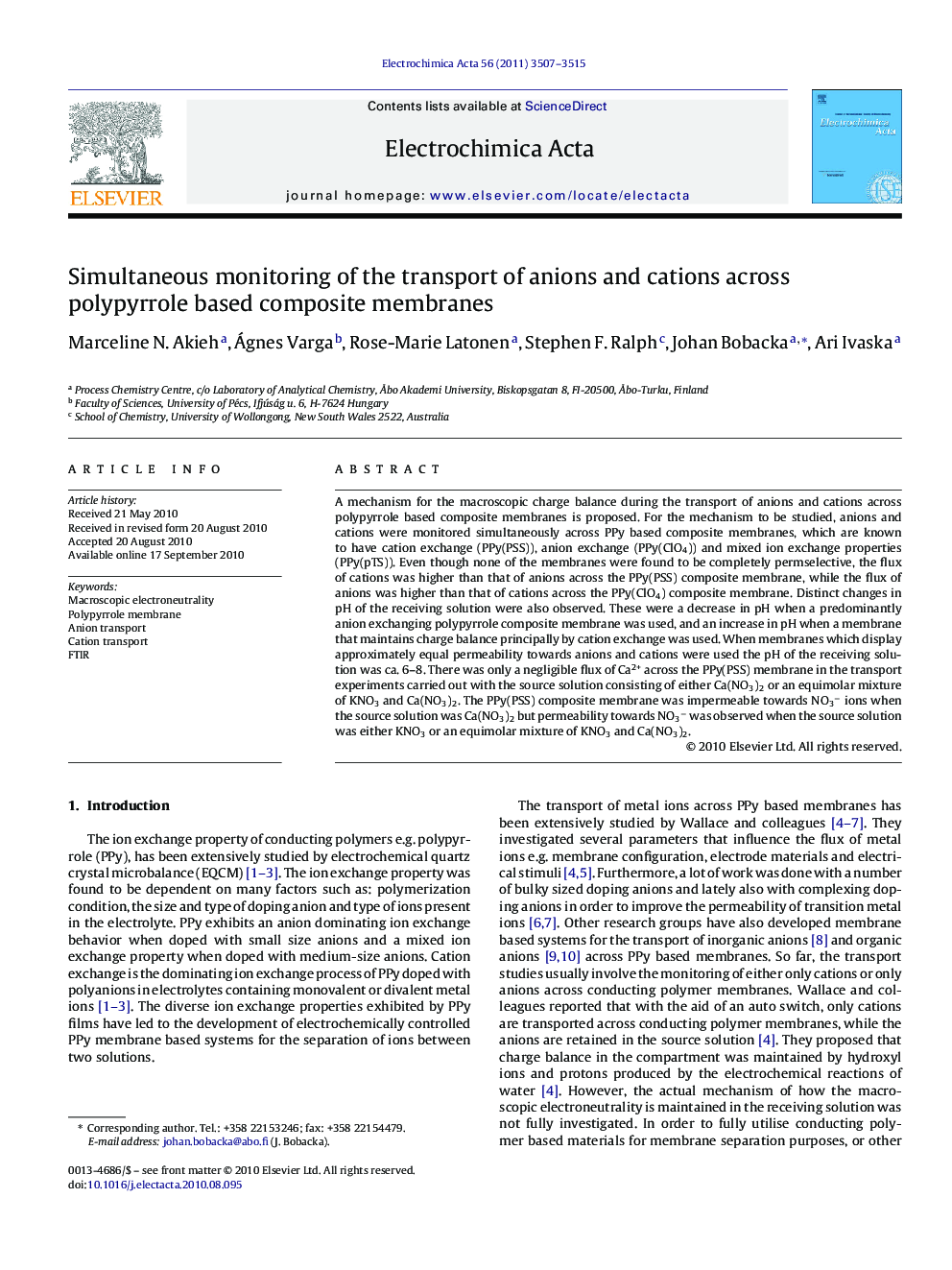| Article ID | Journal | Published Year | Pages | File Type |
|---|---|---|---|---|
| 190166 | Electrochimica Acta | 2011 | 9 Pages |
A mechanism for the macroscopic charge balance during the transport of anions and cations across polypyrrole based composite membranes is proposed. For the mechanism to be studied, anions and cations were monitored simultaneously across PPy based composite membranes, which are known to have cation exchange (PPy(PSS)), anion exchange (PPy(ClO4)) and mixed ion exchange properties (PPy(pTS)). Even though none of the membranes were found to be completely permselective, the flux of cations was higher than that of anions across the PPy(PSS) composite membrane, while the flux of anions was higher than that of cations across the PPy(ClO4) composite membrane. Distinct changes in pH of the receiving solution were also observed. These were a decrease in pH when a predominantly anion exchanging polypyrrole composite membrane was used, and an increase in pH when a membrane that maintains charge balance principally by cation exchange was used. When membranes which display approximately equal permeability towards anions and cations were used the pH of the receiving solution was ca. 6–8. There was only a negligible flux of Ca2+ across the PPy(PSS) membrane in the transport experiments carried out with the source solution consisting of either Ca(NO3)2 or an equimolar mixture of KNO3 and Ca(NO3)2. The PPy(PSS) composite membrane was impermeable towards NO3− ions when the source solution was Ca(NO3)2 but permeability towards NO3− was observed when the source solution was either KNO3 or an equimolar mixture of KNO3 and Ca(NO3)2.
